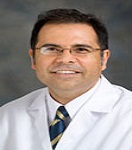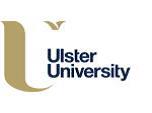Day 1 :
Keynote Forum
M N V Ravi Kumar
Texas A&M Health Science Center, USA
Keynote: Sneaking through the intestinal barriers using polymer Nanosystems
Time : 10:00-10:30

Biography:
Ravi Kumar is the Professor at Department of Pharmaceutical Sciences, Texas A&M Health Science Center in College Station. His research in drug delivery has won him numerous awards including the British Pharmaceutical Conference Science Medal , UK (2009), Tom Gibson Memorial Award by British Society of Plastic Surgeons & the Royal College of Physicians and Surgeons, UK (2008), Indian National Science Academy (INSA) Medal for Young Scientist, India (2007). He was awarded Alexander von Humboldt Research Fellowship, Germany (2002).
Abstract:
The innovator companies ideally look up to novel delivery technologies for extending the life-cycle of the many existing drugs that are or will be off patent to maintain their hold on the market. These delivery technologies are expected to not only extend the life-cycle but also the performance compared to the parent product. The delivery technologies have evolved from simple tablets and capsules to most sophisticated “nanosystemsâ€. These nanosystems are not only capable of improving solubility and permeability limited bioavailability of vast majority of drugs/drug like compounds but also possibly target them to cell or tissue of interest. In this lecture, I present the progress we made in peroral drug delivery from passively absorbed nanosystems to receptor mediated delivery
Keynote Forum
Mohammad Refaat Khattab
Cairo University, Egypt
Keynote: Drug delivery and generic medicine: The challenges ahead - choose where to play - MENA as an industry model
Time : 10:30-11:00

Biography:
Mohammad Refaat Khattab has completed his PhD from Cairo University. He has a unique blend of experience between science and business as he was COO of one of the biggest generic pharmaceutical companies in Egypt – MENA. Also, he worked with Bristol - Myers Squibb for more than 8 years, in addition to his extraordinary and novel consultation projects in pharmaceutical industry in MENA region. This experience delivered to him the value chain in drug delivery and its impact on the commercial process and applied practice.
Abstract:
Although there is still room for growth in generics, delivering it has become more complex. Given that penetration rates are as high as 80 percent in the US and 70 percent in Central and Eastern Europe, significant potential exists for volume penetration in many markets. In addition, between $20 and $60 billion of originator sales will continue to go off-patent each year. However, generics companies face considerable challenges to their profitability and growth. The continent of Africa is becoming a large opportunity. The broader pharmaceuticals market, currently estimated at $18 to $19 billion, is expected to grow to about $50 billion by 2020, representing an annual growth rate of 12 percent. Generics are one of the most vibrant sectors of the market. Worth $4 billion, it is expected to reach $18 billion by 2020 on annual growth of 22 percent. This review will illustrate a full scope picture based on more than 18 years of visual management in the industry and consultation in MENA region in addition to the authorized reports and statistics which draw a map for market players.
Keynote Forum
Hidetaka Akita
Hokkaido University, Japan
Keynote: Development of non-viral nanoDDS for DNA: Analysis, control of the intracellular trafficking and beyond
Time : 11:15-11:45

Biography:
Hidetaka Akita received Ph.D. degrees (Pharmaceutical Sciences) from The University of Tokyo in 2002. After a Research Fellowship for young scientists from the Japan Society for the Promotion of Sciences (JSPS), he was appointed to the Faculty of Pharmaceutical Sciences, Hokkaido University. He was promoted to the rank of an associate professor in 2010. \\r\\nIn 2010, he received the Incentive Award from The Academy of Pharmaceutical Science and Technology, Japan (APSTJ). In 2011, he won The Pharmaceutical Society of Japan Award for Young Scientists. In 2013, he won The encouragement award from The Japan Society of Drug Delivery System\\r\\n
Abstract:
A category of biomedicine is now expanding from low-molecular drugs to the recombinant protein, antibody, and nucleic acids (i.e. siRNA, mRNA and plasmid DNA). While the gene therapy approach has faced technical and/or regulatory impediments, a large number of clinical trials are still ongoing worldwide. One crucial success is the first approval of the Glybera® (UniQure) by the European Medicinal Agency (EMA) as a first gene-based medication\\r\\nGene expression efficacy is rate-limited by the multiple processes (i.e. cellular uptake, endosomal escape, cytoplasmic transport and nuclear delivery). Adequate design to overcome these barriers is a minimum requirement. Our quantitative and mechanism-based information on differences in transfection efficiency between viral and artificial cationic vectors revealed that post-nuclear delivery processes (i.e. transcription and translation) predominantly contributed to the poor transfection efficacy in artificial ones in dividing cells. In other words, the process of the post-organelle delivery process (intra-organelle disposition) should be taken into the consideration.\\r\\nIn this presentation, I’ll propose two strategies to enhance/maximize these processes. First strategy is to develop a neutral nanoparticle in those the use of the cationic material is minimized. As an example, I’ll focus on the concept of SS-cleavable and pH-activated lipid-like materials (ssPalm), that are designed to collapse in response to the intracellular environment to accelerate the “decapsulation/release†of nucleic acids (DNA and siRNA). \\r\\nAs another strategy, I’ll propose a particle that mounts a “Switch-on†function as a trigger of signal transduction, and stimulation of transcription. As an example, I’ll summarize the dendritic cell-targeted gene delivery for the DNA vaccine.\\r\\n\\r\\n
Keynote Forum
Saravanan Muniyandy
Monash University, Malaysia
Keynote: Carboxymethyl sago pulp: A smart polymer for pH sensitive release
Time : 11:45-12:15

Biography:
Saravanan has completed his Masters in Pharmaceutics at the age of 24 years and PhD at the age of 32 years from Chennai, India. He has also completed GCHE at Monash University. Saravanan has nearly 20 years of experience in teaching pharmacy graduates and supervising research students. Presently, He is the Deputy Head of School of Pharmacy, Monash University, Malaysia. He has published more than 30 research papers in reputed journals and has been serving as peer reviewer for several high-quality journals. He is also an editorial board member of reputed journals.
Abstract:
Carboxymethyl sago pulp (CMSP) with a degree of substitution of 0.4% was synthesized from Malaysian sago biomass. Because of the carboxyl functional group, CMSP shows a pH depended solubility. Drug loaded CMSP beads were formed by ionotropic gelation and further cross-linked by irradiation. 5-aminosalicylic acid (5-ASA), a model drug was encapsulated in CMSP beads to target the release in the colon. Fourier-transform infrared spectroscopy and X-ray diffraction studies indicated intact and amorphous nature of entrapped drug. The beads showed pH dependent sustained release over 9 h, and more than 90% of the drug was released only at pH 7.4. Irradiated beads were resisted the drug release in acidic environment at a higher extent than the non-irradiated beads. The swelling behaviour of the beads depended on polymer content and extent of cross-linking. The release exponent n value suggested a non-Fickian transport of 5-ASA.
- Track 3: Smart Drug Delivery System
Location: Houston, USA
Session Introduction
Nada Khudair
Qatar University, Qatar
Title: Non-ionic Surfactant Vesicles as Delivery System for Letrozole

Biography:
Abstract:
Aromatase is an enzyme that leads the bioconversion of androgen into estrogen, which is a main source for cell proliferation and growth in hormone dependent breast cancer. Letrozole (LTZ) is a third generation potent aromatase inhibitor that is approved by the Food and Drug Administration (FDA) for the management of hormone positive breast cancer. The current formulation (Femara®) lacks an effective bioavailability due to LTZ poor-water solubility and rapid systemic metabolism.

Biography:
Saravanan has completed his Masters in Pharmaceutics at the age of 24 years and PhD at the age of 32 years from Chennai, India. He has also completed GCHE at Monash University. Saravanan has nearly 20 years of experience in teaching pharmacy graduates and supervising research students. Presently, He is the Deputy Head of School of Pharmacy, Monash University, Malaysia. He has published more than 30 research papers in reputed journals and has been serving as peer reviewer for several high-quality journals. He is also an editorial board member of reputed journals.
Abstract:
Recently, we have reported ciprofloxacin loaded radiation cross-linked hydrogel for sustained drug delivery. To avoid radiation-induced degradation during formulation, the present study focuses on loading drug in pre-irradiated and sterilized material for extemporaneous use. Carboxymethyl sago pulp (CMSP) was synthesized using classical Williamson etherification. The degrees of substitution, intrinsic viscosity and molecular weight of synthesized CMSP were determined as 0.4, 184.33 dl/g and 75974 g/mol, respectively. 10 and 20% w/v solution of CMSP was irradiated at 10, 20, 25 and 30 kGy to form hydrogels and evaluated by % gel fraction. 10% w/v CMSP solutions produced 2.41-2.61 % of gel fraction irrespective of the irradiation dose. In contrast, 20 %w/v CMSP solution produced hydrogels whose gel fraction inversely proportional to applied irradiation dose. Irradiation dose of 10 kGy has produced the highest average gel fraction of 9.05% (range of 8.31 to 10.05 %) and further increase in irradiation dose actually reduce the % gel fraction. Hydrogel with gel fraction of 10.05% were cut into discs (thickness of 2 ± 0.2 mm and diameter of 4 ± 0.4 mm) and loaded with ciprofloxacin hydrochloride by immersing in the drug solution. Differential scanning calorimetry (DSC) confirmed the transformation of ciprofloxacin hydrochloride into ciprofloxacin during the loading process. DSC along with scanning electron microscopy revealed the crystalline nature of loaded drug. CMSP disc loaded with ciprofloxacin sustained the drug release over 24 h. The release was diffusion controlled and followed first-order kinetics.
Guang Zhang
Andong National University, Korea
Title: PIV Measurement of High-Speed Particle Flows in a Needle-Free Drug Delivery Device

Biography:
Guang Zhang received his B.S. degree in Mechanical Engineering from Three Gorges University, China, in 2012 and M. S degree in Mechatronic Engineering from both Zhejiang Sci-Tech University, China and Andong National University, Republic of Korea. In his master study, he mainly did the research in numerical simulation and schlieren measurement on micro shock tubes. Currently, he is pursuing his doctoral courses in Andong National University. His research interests include micro shock tubes and PIV Measurement.
Abstract:
Recently, an innovative injection method called needle-free drug delivery has been widely used for delivering drug particles into human body without any external needles in medical fields. The contoured shock tube (CST) consisting of a micro shock tube and an expanded supersonic nozzle is the main component in need-free drug delivery device. Shock wave happens in micro shock tube, and supersonic flow with drug particles is induced by the shock wave and accelerated in the expanded nozzle. Drug particles should be accelerated to obtain enough momentum to be delivered into the suitable layer of the skin. Even though needle-free drug delivery system has been studied for a long time, detailed experimental data on shock wave and particle-gas two phase flows in CST was sparse to date. In the present study, Particle Image Velocimetry (PIV) system was used for measuring the instantaneous velocity of the gas-particle flow behind propagating shock wave in designed CST model as is shown in Fig. 1. Unsteady flow properties and shock wave propagation were analyzed by the instantaneous velocity fields. Schlieren visualization was performed to observe the shock wave structure and propagation in the CST. Based on the density change of flow, the shock wave characteristics were obviously observed by the camera with high resolution. Pressure measurement was also carried out. Six high sensitive pressure transducers were employed to record pressure changes as the shock wave moved through different locations along walls in the test section. Numerical simulation was performed with unsteady compressible Naver-stokes equations which were solved by using a fully implicit finite volume scheme. Experimental results were compared with CFD simulation.
Victor Lopez Davila
University College London, UK
Title: Efficacy of DOPE/DC-cholesterol liposomes and GCPQ micelles as AZD6244 nanocarriers in a 3D colorectal cancer in vitro model

Biography:
Victor Lopez Davila is a PhD candidate at University College London (UK) in the field of Nanomedicie and Tissue Engineering. He completed his MSc in Nanomedicine in Cranfield University (UK) and his BSc in Biotechnology in Lleida University (Spain) in 2011. He also works part time as a biobank technician for Tissue Access for Patient’s Benefit (TAPB), and as a perfusionist at the Royal Free organ retrieval team in London.
Abstract:
Background: Colorectal cancer therapy shows very low response rates, leaving room for improvement. One of the most popular approaches to overcome this limitation is the use of organic nanocarriers to improve drug delivery. Methods: In this work we used cationic DOPE/DC-cholesterol liposomes and GCPQ micelles to deliver AZD6244, an inhibitor of the MAPK pathway, to colorectal cancer cells. HCT116 cells were cultured in monolayers and in collagen-based 3D models (tumouroids), and treated with different concentrations of AZD6244 as a free drug as well as in micelle and liposome nanoformulations. Fluorescent nanoparticles were used to track the penetration of these nanocarriers into the tumouroids. Results: Nanoparticle-mediated drug delivery proved to be very superior to the free drug in monolayers, while the low diffusion of the nanoparticles through the dense collagen mass hindered their therapeutic effect in tumouroids. Contrary to this, the free drug was significantly more efficient in tumouroids than in monolayers, suggesting very different cellular behaviour between these models. Conclusions: These results highlight the role of nanoparticles in improving drug delivery and the need to include 3D models in early phases of drug development, particularly in the case of nanoformulations.
Gintare Leonaviciute
University in Innsbruck, Austria
Title: SNEDDS is the key in a peptide protection towards luminal enzymes

Biography:
Gintare Leonaviciute was born in Lithuania in 1987. She currently is a PhD student in Austria of University in Innsbruck (Department of Pharmaceutical Technology). Her research interests focus on the oral drug delivery systems. She finished her studies in pharmacy at The Kaunas University of Medicine. During her studies she was a part of an Erasmus exchange program and went for one year to accomplish an internship abroad. In addition, she was working at Daichii Sankyo, Munich (Germany) as a pharmacist. She fluently speaks German, English, and Lithuanian.
Abstract:
The aim of this study is the development of self-nanoemulsifying drug delivery systems (SNEDDS) with improved resistance towards pancreatic lipases and with protective effect against luminal enzymatic metabolism using leuprorelin as model peptide drug. Material and Methods: Hydrophobic leuprolide oleate obtained after leuprolide acetate complexation with sodium oleate was incorporated into three different SNEDDS formulations. SNEDDS stability towards pancreatic lipases was investigated utilizing a dynamic in vitro digestion model simulating small intestinal digestion. Protective effect of SNEDDS in respect to peptide drug stability against proteolytic enzymes, trypsin and alfa- chymotrypsin, was determined via HPLC1. Leuprorelin acetate in an aqueous control solution served as control. Results: All formulations were dispersed in a concentration of 1% (m/v) in simulated gastrointestinal fluid at pH 6.5. Results of in vitro digestion demonstrated that 80% of SNEDDS containing the highest amount of ester linkages was degraded within 60 min. In comparison to that, SNEDDS without ester bonds showed no degradation. With increasing oil droplets hydrolysis the remaining amount of peptide encapsulated into formulation decreased. Furthermore, after 180 min incubation with trypsin up to 33.5% and with chymotrypsin up to 60.5% of leuprolide oleate was still intact while control solution was completely metabolized by trypsin within 120 min and by α-chymotrypsin within 5 min. Protective effect in environment containing lipases was lower due to oil phase degradation, however, the amount of peptide in SNEDDS free of ester linkages was remarkably higher (48.14 %) compared to control solution and SNEDDS susceptible to lipases.

Biography:
I am Taddese Mekonnen Ambaye from Ethiopia. I am 31 years old man. Academically, I have Bachelor Degree in Pharmacy and MSc in Pharmaceutics. I have been working in the positions of Assistant Lecturer and Lecturer ranks at the School of Pharmacy, University of Gondar since 2007. I have been participating in teaching, research and community service activities. I have also four years of leadership experience at the school. Regarding research activities, I have published six papers as principal and coauthor. I used to work hard to put my contribution to the development of the pharmaceutical sector in my country.
Abstract:
In modern pharmaceutical dosage forms, excipients often fulfill multi-functional roles such as modifying release, improvement of the stability and bioavailability of the active ingredient, enhancement of patient acceptability and ensure ease of manufacture. New and improved excipients continue to be developed to meet these needs of advanced drug delivery systems. The objective of this study was to extract, characterize and evaluate myrrh gum as binding agent in granule and tablet formulations using paracetamol as a model drug in comparison with standard binders (PVP and Acacia). The gum fraction of myrrh was extracted, purified and characterized for its physicochemical properties. Batches of granules containing paracetamol were prepared using 2 %, 5 %, 7.5 % and 10 % w/w of myrrh gum and the reference binders. Tablets were evaluated for their mechanical and release properties. Result indicated myrrh gum exhibited high relative solubility in cold and hot water, low swelling power, acceptable moisture content, small total ash, no tannin and starch/dextrin content, mucilage with acidic pH and high viscosity, and excellent powder flow properties. Granules showed good particle size and size distribution, excellent flow and compressibility properties. The crushing strength, disintegration and dissolution times of the tablets increased with increased binder concentration while their friability decreased. All tablets passed standard specifications with respect to disintegration time, uniformity of weight, thickness, diameter, friability, hardness and tensile strength except friability at 2% binder and disintegration times at 10% myrrh gum and acacia. Comparison of the in vitro drug release showed tablets prepared with myrrh gum gave better drug release than acacia and comparable to PVP. This suggests that myrrh gum could be useful alternative binding agent especially when optimum mechanical strength and release required.

Biography:
Giuseppina Salzano graduated in Pharmacy in 2007 at the University of Naples in Italy and in 2010 she specialized in Hospital Pharmacy at the same University. She received her PhD in Pharmaceutical Science in 2014 at the University of Naples, Italy. Since 2012, she is working at the Center for Pharmaceutical Biotechnology and Nanomedicine in Boston (USA), where she is a Postdoctoral Research Associate. Dr. Salzano has constantly worked on the development of drug delivery systems for the treatment of different diseases. She is author of more than 20 papers and inventors of 2 international patents.
Abstract:
Since its discovery small interfering RNAs (siRNA) have quickly crept into the biopharmaceutical research as a powerful tool for the treatment of different human diseases based on altered gene-expression. Despite promising data from pre-clinical studies, concrete hurdles still need to be overcome to bring therapeutic siRNAs in clinic. With this in mind, we have reversibly modified siRNA with a phosphothioethanol (PE) portion via a reducible disulfide bond and incorporated the resulting siRNA-S-S-PE conjugate into nanosized polyethyelene glycol 2000-phosphatidyl ethanolamine (PEG2000-PE)-based polymeric micelles (PM). Then, we successfully co-incorporated in the same PM an anti-survivin siRNA-S-S-PE conjugate and chemotherapeutic agents, such as paclitaxel (PXL) for combined therapy. The developed nanopreparation showed high colloidal stability, high incorporation efficiency of both active agents, and small particle sizes compatible for parenteral administration. In an animal model of cancer, the micelles accumulate in distal tumors and delivered anti–survivin siRNA and PXL in sufficiently high amounts to mediate a potent and specific survivin downregulation and to improve anticancer activity as compared with single agents. In addition, survivin downregulation by anti–survivin siRNA/PXL PM mediated the sensitization of a resistant ovarian tumor to non-effective doses of PXL. Compared to conventional systems for siRNA delivery, we suggested a new type of platform that can respond to local stimuli, such as high levels of reductase in cancer cells, and release the siRNA free and active at the desired site. Moreover, the developed PM are suitable to incorporate different type of active agents for combined therapy.
Wina Maryana
Institut Teknologi Bandung, Indonesia.
Title: Formation of phytosome containing silymarin using thin layer-hydration technique aimed for oral delivery

Biography:
Wina Maryana is completing her Ph.D from Research Group of Pharmaceutics, School of Pharmacy, Institut Teknologi Bandung. She has published five papers in reputed journals.
Abstract:
Silymarin is a unique flavonoid complex isolated from milk thistle (Silybum marianum) and has been widely used as hepatoprotective agent. Orally administered silymarin will be absorbed rapidly and only 20-50% of silymarin will be absorbed through gastrointestinal tract, resulting on its low bioavailability. Those limitations are due to its poorly soluble either in water and oil and its low intestinal permeability. This study was aimed to develop silymarin-loaded phytosomes to improve silymarin bioavailability with sufficient safety and stability. This system consists of silymarin-phospholipid complex prepared by solvent evaporation method, which was incorporated to formed phytosome shape vesicles using thin layer method with various concentration and molar ratio of silymarin and phospholipid. Phytosome vesicles size was reduced using probe sonication. The result demonstrated that formula with 2% silymarin-phospholipid complex and molar ratio of 1:5 showed the best physical properties with mean vesicle diameter of 133.53±8.76 nm, polydispersity index of 0.34±0.08, entrapment efficiency of 97.17±2.41 %, loading capacity of 12.18±0.30%, and good stability after freeze thaw stability test. Analysis of FTIR spectroscopy and DSC was confirmed the presence of physical and chemical interactions between silymarin and phospholipid complex. Well formed and discrete vesicles of phytosome were revealed by Transmission Electron Microscopy, drug content, and freeze thaw stability test.
- Track 1: Drug Delivery and Pharmacology
Location: Windsor-I

Chair
Alessandro Grattoni
Houston Methodist Research Institute, USA

Co-Chair
Laili Che Rose
University of Malaysia, Malaysia
Session Introduction
Alessandro Grattoni
Houston Methodist Research Institute, USA
Title: Silicon nanochannel platforms for tightly controlled therapeutic release and immunoisolated cell transplantation
Time : 12:15-12:40

Biography:
Alessandro Grattoni obtained his PhD in Biomedical Engineering at Politecnico of Torino while working in Dr. Mauro Ferrari’s team at the University of Texas Health Science Center in Houston. He is an Assistant Professor and Chair of the Nanomedicine Department at HMRI. His laboratory’s research focuses on the development and validation of nanochannel membranes for long-term administration of therapeutics and cell transplantation. This includes experimental and phenomenological analyses within both in vitro and in vivo models. He has received support from NASA, NIH, CASIS, Vivian Smith Foundation, Nancy Owens Memorial Foundation, and NanoMedical Systems, Inc.
Abstract:
Silicon nanochannel platforms leveraging nano-constrained diffusion for tightly controlled therapeutic release and immunoisolated cell transplantation: Through cutting-edge implementation of fabrication techniques developed in the microelectronics industry, our group is able to create dense arrays of nanochannels ranging from nanometers to millimeters in height with a precision of ±10%. Two device platforms have been invented in order to leverage these capabilities: a silicon nanochannel membrane for drug delivery and a surface-modified polymer system for cell transplantation. The drug delivery system employs adaptable channel sizes down to 2.5 nm to closely constrain molecular transport, linearizing Fickian diffusion to achieve constant administration. Implantable drug delivery devices are fashioned by integrating these nanochannel membranes within bioinert metallic or polymeric capsules. These devices are minimally-invasive, can be implanted subcutaneously, and provide linear (zero-order) release of drugs and biomolecules. Clinically-relevant dosages of testosterone for hormone replacement have been released for more than 6 months at a constant rate with this platform. Further innovations include active, on-board control systems to permit remote manipulation or activation, enabling telemedicine or chronotherapy regimens. The polymeric cell transplantation system was primarily developed for pancreatic islet allografts. This device, the “NanoGlandâ€, is used to provide an immunoprotective environment for bioactive allografts by isolating cells from inflammation and rejection mechanisms while permitting interaction with glucose, insulin, nutrients, and waste exchange from the interstitial environment. Combining the NanoGland with the silicon nanochannel membranes has allowed controlled release of immunosuppressive material or factors for cell growth and vascularization following cell transplantation.
Mansi K Shah
Amneal Pharmaceuticals, USA
Title: Preparation, in vitro evaluation, statistical optimization and application of Caco-2 cell line for in vitro absorption mechanism of carvedilol-loaded solid lipid nanoparticles for oral delivery
Time : 12:40-13:05

Biography:
Mansi Shah, M.S, Ph.D., is currently a Research Scientist at Amneal Pharmaceuticals, NJ, USA. Prior to joining Amneal, Dr.Shah has also worked as a Formulation Scientist at Hi-tech Pharmacal-An Akorn Company, USA. At a very young age, she received her Ph.D. in Industrial Pharmacy, Pharmaceutical Sciences from St.John’s University, NY, USA in 2013. â€. Dr. Shah has done extensive research to develop an oral drug delivery system for drug molecules which suffers low bioavailability due to poor aqueous solubility and high first pass metabolism. She has completed her M.S. in the same major from the same university in 2009. She has also served as a Scientist in few other pharmaceutical companies. Dr. Shah has been recipient of several awards at International and local conferences including travel-ship award in AAPS-2012 from Merck. She is also a recipient of Graduate scholarship award by NJPhAST. She has presented her research at both national and international conferences. Dr. Shah is a very young, enthusiastic, and focused with a keen scientific knowledge.
Abstract:
The availability of reliable screening methods for rapid evaluation and prediction of the absorption mechanism is needed with lipid based drug delivery systems especially for solid lipid nanoparticles (SLN). Till the date, in vitro method for absorption mechanism of SLN administered orally difficiating active absorption via lymphatic uptake from the passive absorption has not been reported. Various researchers have tried methods such as intra-duodenal administration, ex-vivo with cannulation of lymphatic duct, or animal studies. However, there is no in vitro method, which can be used as a screening tool for the active absorption of SLN before performing in vivo experiments. Caco-2 cells have been widely used and accepted tool for the investigation of transport across small intestinal epithelium of many substances. The direct relationship of Caco-2 cell line with the lymphatic absorption has not been evaluated to the best of our knowledge. However, Caco-2 cell line has been used to determine the effect of lipid based excipients as formulation variable for the lymphatic delivery of therapeutic agents. Amongst the lipids evaluated, long-chain fatty acid forms lipoprotein assembly by associating with intestinal lipoproteins in the enterocytes and thereby facilitates lymphatic transport of therapeutic agents. Thus, Caco-2 cell line could have a potential application as screening tool for lipid based formulations targeted to lymphatic absorption.
Laili Che Rose
Universiti Malaysia Terengganu, Malaysia.
Title: Exploiting nanomaterials for release on demand in drug delivery systems
Time : 13:45-14:10

Biography:
Laili Che Rose is currently a Senior Lecturer at Universiti Malaysia Terengganu. Her initial interest is in the area of fine particles with special emphasis in surfactant systems. Now, her interest is directed more in the area of nanomaterials and their applications in drug delivery systems. She obtained her PhD from University of East Anglia, Norwich, England in 2013. To date, she has authored and co-authored more than 30 articles in refereed journals.
Abstract:
This work was to develop a novel drug delivery system exploiting special opportunities afforded by synthesis of nanomaterials to be applied inside the colon. It must be robust enough to cope with the adverse conditions in the gastrointestinal tract (GI) and be able to reach and release “on demand†at the colon area at the right time. An oral capsule formulation with iron oxide nanomaterials (IONs) containing coating (fatty acids and paraffin) was used to transport drug and release drug in the colon.With that in mind, the synthesis of magnetic IONs via a co-precipitation method were conducted. The key physical properties of the materials were characterized employing standard techniques such as HPLC, FTIR, DSC, DLS, XRD, TEM and SEM. Hard capsules filled with model drug, paracetamol, were coated with IONs containing coatings. The optimum composition as well as effective release “on demand†was explored using magnetic nanomaterials hyperthermia. Results showed that paraffin-based coatings had appropriate properties for this application. Finally, taking into account all the results, a design of a novel drug delivery system, together with an experimental setup for testing the “release in demand†was proposed. The approach is generic, easy to set up and could also be applied to many other situations where delivery on demand is required
Hidetaka Akita
Hokkaido University, Japan
Title: Particle formed by ssPalm as a nanoDDS platform for the genes and nucleic acids
Time : 14:10-14:35

Biography:
Hidetaka Akita received PhD degrees (Pharmaceutical Sciences) from The University of Tokyo in 2002. After a Research Fellowship for young scientists from the Japan Society for the Promotion of Sciences (JSPS), he was appointed to the Faculty of Pharmaceutical Sciences, Hokkaido University. He was promoted to the rank of an Associate Professor in 2010. In 2010, he received the Incentive Award from The Academy of Pharmaceutical Science and Technology, Japan (APSTJ). In 2011, he won The Pharmaceutical Society of Japan Award for Young Scientists. In 2013, he won The Encouragement Award from The Japan Society of Drug Delivery System.
Abstract:
Recently, we design a nanoparticle which is neutral at physiological (cytoplasmic) pH to avoid mRNA interactions, and is degradable for the effective release of DNA or nucleic acids in response to the cytoplasmic environment. The key molecule to realize this concept is an ionizable lipid-like material; we refer to as SS-cleavable Proton-Activated Lipid-like Material (ssPalm). This molecule mounts dual sensing motifs that can respond to the intracellular environment; positively charged tertiary amines responsible for an acidic compartment (endosome/lysosome) for membrane destabilization, and disulfide bonding that can be cleaved in reducing environment (cytosol). The liposomal nanoparticle formed with ssPalm (LNPssPalm) was stable for at least 24 h in serum. The dynamic flow of LNPssPalm, with evidence for no aggregate formation and rapid liver accumulation was verified after the intravenous administration by in vivo intravital real-time confocal laser scanning microscopy. Moreover, the long-lasting gene expression (>2 weeks) in the liver without no production of the inflammatory cytokines were conferred. Furthermore, the surface modification of the LNPssPalm with PEG prolonged the blood circulation, and resulted in the successful gene expression in tumor tissue. As a 2nd generation of ssPalms were developed, in those fat-soluble vitamins such as vitamin A or vitamin E was used as a hydrophobic scaffold. Selection of the adequate hydrophobic scaffold and further molecular tuning in tertiary amines resulted in the development of the hepatic siRNA delivery system. Collectively, ssPalm is one of the promising platforms as a carrier for genes and siRNA.
Simi Gunaseelan
University of Texas, USA.
Title: Novel Intravaginal Delivery of Antiretroviral-based Microbicides for HIV prevention
Time : 14:35-15:00

Biography:
Gunaseelan’s research expertise is in drug delivery. For the past 10 years she has been working towards developing ‘Novel Drug Delivery Systems’ for HIV Prevention & HIV and Cancer Therapeutics. Her research works resulted in 5 patents, more than 20 publications in high-impact journals and presentations in 20 national and international conferences. Her dedication towards research work at Rutgers University School of Pharmacy New Jersey, led her to be a recipient of Merit Award for 3 consecutive years. She is currently a journal reviewer for Advanced Drug Delivery Reviews, Pharmaceutical Research, and Controlled Release Society Meeting Abstracts
Abstract:
Objectives: Microbicides, products applied vaginally or rectally, are effective at preventing HIV transmission. However, many products (e.g., peptides, antiretroviral drugs) are reactive or incompatible in the existing diffusion/hydrolysis/dissolution based delivery systems. To overcome the issues of extended delivery and product compatibility, the use of a novel subliming solid matrix-based delivery system is described here. Methods: The microbicides C5A, tenofovir fumarate, emtricitabine, dapivarine, UC-781 and IQP0528 were employed as representatives of a range of molecular structures and physicochemical properties. Hydrophobic, chemically inert subliming solid matrices, utilized for microbicide formulations and achieving a defined range of sustained release rates, included norbornane, hexamethylcyclotrisiloxane, perfluoroundecane, perfluorododecane and cyclododecane. Rates of matrix sublimation and concomitant microbicide release were determined in vitro. Formulations were tested for cellular toxicity, and durations of anti-HIV-1 activity by constant release of microbicides from the sublimable matrices. Results: Subliming solid matrices release microbicides by surface erosion achieved through sublimation. Zero order sustained microbicide release was achieved in vitro, at rates independent of microbicide structures and properties, and controlled exclusively by sublimation enthalpies of each hydrophobic matrix material. The matrices provided prolongation of anti-HIV-1 activity relative to bolus microbicide administration, when evaluated in cultured human ectocervical tissue, macrophages, and TZM reporter cells. No evidence of matrix toxicity was observed after continuous exposure to macrophages, T-lymphocytes, PBMC cells and ectocervical explants. Implications: Subliming matrices offer unique attributes that will allow steady-state delivery of any microbicide, over durations ranging from weeks to months, by employing, simple, stable, and readily available matrix materials, suggesting novel delivery capabilities.
Steven A Giannos
Independent Consultant, USA
Title: Transdermal Drug Delivery Microporation and Micropore lifetime enhancement
Time : 15:00-15:25

Biography:
Steven A Giannos is an independent transdermal consultant. His expertise is in pioneering skin permeation enhancement technologies (i.e. iontophoresis, sonophoresis, microneedles, etc.). His career includes working on novel transdermal and controlled release technologies at Chrono Therapeutics, Inc., Novartis, Sontra Medical, Lavipharm Corp., Boston Scientific and MIT. He holds an MS degree in Management from Capella University and an MS degree in Polymer Science from the University of Massachusetts, Lowell. He holds 5 patents, with more pending and has authored a number of book chapters, publications and invited articles and presentations covering new technologies for transdermal drug delivery technologies.
Abstract:
The modern age of transdermal drug delivery started with the marketing of Transderm ScÅp in 1979 as a scopolamine patch for the treatment of motion sickness, nausea and vomiting. Since 1997, transdermal drug delivery companies have aligned with life science and biopharmaceutical industries, to deliver large molecules, peptides and proteins, i.e. insulin, calcitonin, PTH (1-34), etc. Strategies and technologies have been developed for skin pretreatment or continuous use, in order to accomplish large molecule delivery. So far, the most effective strategy for overcoming the skin’s barrier properties has been to focus on the creation of micropores in the stratum corneum. Microchannels or micropores can be created by external means such as microneedles, ultrasound, electroporation, radiofrequency and laser. Strategies and methods are now being developed to characterize micropores and understand their viability. Additionally, approaches to enhancing micropore lifetime are being investigated. The key to future successes in transdermal drug delivery of large molecules, especially biopharmaceuticals, will be the understanding and maintenance of skin micropores generated by microneedle pretreatment or other external physical techniques.
- Track 4: Nanotechnologies for Drug Delivery
Location: Houston, USA
Session Introduction
Nobuhito Shibata
Doshisha Women’s College of Liberal Arts, Japan
Title: Pharmaceutical evaluation of nano-fiber matrix supported drug delivery system using solvent-based electrospinning method
Time : 15:25-15:50

Biography:
Nobuhito Shibata was born in 1962. After finishing a master course of clinical pharmacy at Kyoto Pharmaceutical University in 1986, He worked for Shiga University of Medical Science for 13 years as a hospital pharmacist. During this period, he got a PhD degree (Pharmaceutical Sciences) from Kyoto Pharmaceutical University. Subsequently, he changed his career and worked for Kyoto Pharmaceutical University for 6 years as an associate professor in the field of pharmacokinetics. In 2005, he was transferred to a higher post at Doshisha Women’s College of Liberal Arts as a professor of Faculty of Pharmaceutical Science. His research interests focus on the constructing drug delivery system using nano-particles.
Abstract:
The solvent-based electrospinning (ES) method is mainly employed in the textile industry to make nano-fiber from polymers. Utilizing this method, nano-fiber matrix supported controlled-release systems of drugs were prepared and evaluated. Where, methacrylic acid copolymer (EUDRAGIT® S100, MCA) was used as a base polymer. Using the ES apparatus equipped with a high-voltage supplier, syringe pump and a metallic collection plate for nano-fiber, the polymer solution including drug (hydrophilic or hydrophobic) was extracted into a glass syringe with a stainless needle (18 gauge), and the syringe was fixed at a designated position in the ES apparatus. The voltage applied between the needle and the metallic collection plate was 25 kV with a collection distance of 10 cm. The polymer solution including the drug was then pushed out at a constant flow rate. Consequently, a nano-fiber was formed from the stream of polymer solution in the electric field, and a self-assembled nano-fiber sheet was obtained on the metallic collection plate. The X-ray diffraction for the nano-fiber sheet showed that drugs were packed into nano-fiber in amorphous form. Then, the nano-fiber sheet including drug was applied for several drug delivery system as a nano-fiber matrix. In vitro release profiles and in vivo pharmacokinetic profiles of drugs from the formulation including nano-fiber matrix in rats and/or mice showed the aspects of controlled-release system as compared to conventional preparations. Moreover, the nano-fiber matrix is applicable for both hydrophilic and hydrophobic drugs, and provides new approaches to prepare several formulations with pharmaceutical advantages.
Samer R Abulateefeh
The University of Jordan, Jordan
Title: Bisphosphonates-loaded nanoparticles: Comparison between different nano-formulations
Time : 15:50-16:15

Biography:
Samer R Abulateefeh graduated with a BSc degree in Pharmacy from the University of Jordan in 2005. He then spent two years in the local pharmaceutical industry working as a Pharmacist Formulator in Research and Development (R&D) laboratories. Subsequently, he joined the School of Pharmacy at the University of Nottingham, UK and earned his PhD degree in 2011 following a research conducted on developing novel thermo-responsive polymeric nanoparticles for cancer therapy. In 2011, he was appointed as an Assistant at the Faculty of Pharmacy, The University of Jordan. His research interests focus on the preparation of nano-medicines and polymer colloids for drug delivery and biomedical applications
Abstract:
Incorporation of charged water soluble drug molecules into polymeric nanoparticles (NPs) suffers generally from low incorporation efficiency and prompt release. The aim of this work is to encapsulate such drugs into different types of polymeric nanoparticles and compare between them in terms of drug loading and release kinetics. Risedronate sodium, a third generation bisphosphonate (BP), was used as a model drug. BPs are non-hormonal agents used for the treatment of osteoporosis, Paget’s disease and tumor-induced hypercalcemia. A number of biodegradable and biocompatible polymers were used for NP formulations such as PLGA, Eudrgit® and alginate polymers. To the extent of our knowledge, no prior reports showed the encapsulation of BPs into alginate NPs. The resulting drug-loaded nanoparticles were characterized in terms of particle size, zeta potential using Dynamic Light Scattering (DLS) and morphology using Transmission Electron Microscope (TEM). The effect of varying formulation parameters (i.e. drug concentration, polymer concentration and processing parameters) on drug encapsulation efficiency and drug release properties were investigated
Hussaini Syed-Sha-Qhattal
DPT Laboratories, USA
Title: Tumor targeted hyaluornan grafted Liposomes – design and process development challenges
Time : 16:15-16:35

Biography:
Hussaini completed his PhD in Pharmaceutical Sciences from Texas Tech University Health Sciences Center in 2013. He has over 10 years of research experience in Pharmaceutics. He is currently working as a senior scientist in the Formulation Department at DPT Laboratories where he is tasked with Pre formulation, formulation and process development of Generic and Branded Small Volume Parenterals, Semisolids and Aerosol Foams
Abstract:
Hyaluronan grafted liposomes were developed to provide long circulation of the loaded drugs while also providing the receptor CD44 mediated internalization by target tumor cells. Investigations were carried out in vitro and in vivo to determine the effect of polymer molecular weight, grafting density along with presence or absence of PEGylated lipids on the liposome. Classical radiopharmacokinetics and Near Infrared Animal imaging techniques were used to track the biofate of the injected liposomes in healthy and tumor bearing mice. We observed that presence of surface hyaluronan negatively impacts the circulation and thus tumor accumulation of liposomes. When PEGylated lipids were incorporated in the hyaluronan liposomes a decrease in clearance of these liposomes was seen which correlated well with longer circulation and enhanced tumor accumulation. Enhanced tumor internalization was associated with the hyaluronan moiety of the liposomes and they had nearly two fold higher internalization compared to Pegylated liposomes devoid of Hyaluronan. Enhanced cell kill was then demonstrated by a Caspase-3 staining of the tumor slices suggesting the enhanced efficacy of hyaluronan grafted tumor targeted liposomes compared to PEGylated liposomes.This study was then analyzed for the industrial feasability was outlined with discussion on the generic reverse engineering concepts.
Gagan Kaushal
Thomas Jefferson University, USA
Title: Biodegradable nanoparticle based delivery system for therapeutic Proteins

Biography:
Gagan Kaushal has completed his PhD from St. John’s University. He is presently working as an Associate Professor in Pharmaceutics at Thomas Jefferson University. Prior to this, he served as Associate Professor at University of Charleston, Postdoctoral Associate at University of the Sciences in Philadelphia, and Senior Research Scientist, Formulations at Biosyn Inc. His expertise includes drug delivery systems, formulation development, pharmacokinetics, controlled drug delivery, drug stability, and drug solubility. His interests are focused on compounding, formulation development, stability studies, bio-analysis, and pharmacokinetic studies. He also has two Investigational New Drug Applications (INDA) approved by FDA.
Abstract:
Nanoparticle based protein delivery systems are attractive for a variety of reasons. In formulating the nanoparticles for protein delivery a wide variety of harsh process conditions are used which are known to adversely affect protein stability and are mainly responsible for the uncontrolled protein release profiles. Growth hormone (GH) is a protein that is essential for growth and is used as a model protein for our studies. The adsorption characteristics of r-hGH onto Poly(D,Lâ€lacticâ€coâ€glycolic acid) (PLGA) nanoparticles were studied in the presence of competing proteins under conditions of varying solution pH. Since release of the protein from the polymer can be modulated using surface active agents such as surfactants or other proteins, a mechanistic understanding of the adsorption characteristics in presence of these agents may provide strategies for successful design of nanoparticle based delivery systems for proteins. The intent of the study was to characterize the effect of proteins of varying properties on interaction of r-hGH with PLGA surface. Knowing the nature of interactions that govern the instability of proteins at solid/liquid interfaces facilitates successful design and development of protein formulations. These studies have helped us to understand the nature of interactions that govern the adsorption process and will enable us to select a biocompatible polymer for drug delivery and modulate its drug loading. The data shows that the interaction of r-hGH on hydrophobic polymer surfaces can be modulated by the presence of competing proteins in the solution.
Daryl C. Drummond
Merrimack Pharmaceuticals, USA
Title: Development and clinical translation of nanoliposomal chemotherapeutics

Biography:
Drummond currently serves as the Vice President of Discovery for Merrimack Pharmaceuticals, and was one of two principle inventors for many of Merrimack's nanotechnology-based drugs and platform technologies, most notably MM-398, a highly stabilized liposomal formulation of irinotecan. He joined Merrimack in October of 2009 following the merger of Merrimack with Hermes Biosciences. Dr. Drummond received a Ph.D. degree in Biochemistry from Indiana University in 1997, with an emphasis on membrane biochemistry and biophysics. He later joined Hermes Biosciences in 2000 as an Associate Director of Liposomal Research and Development following a post-doc in the laboratory of the renowned father of current liposome drug delivery systems, Demetrios Papahadjopoulos. Overall, Dr. Drummond has more than 20 years of experience in the research and development of advanced drug delivery systems, including four unique drugs that have been tested in various clinical trials, eight issued patents or patent applications, and more than 50 peer reviewed publications focused on lipid-based nanotherapeutics. The focus of his research is in developing targeted nanotherapeutics for treating a wide range of solid tumors. He successfully developed novel platform technologies for targeting lipidic nanocarriers such as liposomes using a range of novel ligands, but most notably Fab’ or scFv antibody fragments. He has also developed platform technologies for dramatically improving the in vivo drug retention of difficult to stabilize small molecule drugs, and for systemic delivery of nucleic acids. Three of their nanotherapeutics are being studied in clinical trials, including an ErbB2-targeted liposomal doxorubicin which is currently being evaluated in a Phase I study in ErbB2-overexpressing breast cancers and a nanoliposomal formulation of irinotecan which recently showed promising results in a Phase II trial in gemcitabine-refractory pancreatic cancer and is currently being evaluated in a Phase III trial in pancreatic cancer. A fourth antibody targeted lipososomal drug is scheduled to enter the clinic in 2015.
Abstract:
Highly stabilized sustained released liposomal formulations of chemotherapeutic drugs have been developed and currently being evaluated in the clinic. These novel drug delivery systems provide for extended circulation lifetimes, preferential distribution to sites of solid tumors, and the ability to mitigate certain dose limiting toxicities when administered as the free form of the drug. Our lead agent, nal-IRI or nanoliposomal Irinotecan (MM-398) has recently completed a successful Phase III clinical trial in gemcitabine refractory pancreatic cancer. A second ErbB2-antibody targeted immunoliposomal doxorubicin is being studied in a pivotal Phase II trial in ErbB2-overexpressing breast cancer patients. The development of these and similar drugs requires the careful optimization of a variety of parameters related to the encapsulated drug, physicochemical properties of the drug carrier system itself, drug entrapment and retention strategies, and the introduction of targeting ligands. Here we will discuss both the engineering considerations as well as the translation consideration for this promising class of drug carrier systems.
- Track 7: Medical Devices for Drug Delivery, Therapy and Surgery
Session Introduction
Joe Jensen
Noble, USA
Title: Device training and onboarding: Patient preference of smart training devices

Biography:
Joe is responsible for the global marketing communications at Noble. He began his career at Fortune Tech Data Corporation, managing the channel advertising for IBM touch screens and Fujitsu hard drives. With this knowledge, he became the Director of Marketing for Neo Media Technologies, responsible for their worldwide marketing strategies. Prior to joining Noble, Joe ran his own marketing consulting agency focused on strategic marketing planning and market segmentation for C-level executives. Joe has a BSBA in Marketing from the University of Florida, an MBA from Nova Southeastern University, and is an Adjunct Professor teaching Marketing for Managers at Lake Sumter State College.
Abstract:
For patients diagnosed with chronic medical conditions, daily self-administration using drug delivery devices, such as inhalers, MDIs and DPIs, is often necessary to successfully complete a treatment program. However, recent studies have shown that many patients are struggling to follow all the required steps outlined in the provided Instructions for Use (IFU) document.The lack of proper patient education around administering treatment, known as the onboarding, often results in misuse, user errors or discontinued use of a prescribed drug, costing the healthcare industry billions every year. According to a recent survey conducted by the University of Texas Medical Branch at Galveston (UTMB), 93 percent of patients use their inhaler incorrectly. Multisensory Training Devices are an example of recent improvements in technology that assist in creating an easier experience for patients to self-administer their medication. A user study conducted by Noble in Orlando, Fl. determined that 82 percent of users are most confident when training and onboarding with smart training devices that detect and teach them how to prevent errors. Additionally, smart training devices with error detecting technologies are preferred methods in overcoming anxiety and preventing errors. Participants will walk away with learnings for the next generation of self-administration in regards to error correcting trainers that decrease patient anxiety and increase sufficient completion of treatment programs.
- Track 1: Drug Delivery and Pharmacology
Location: Houston, USA
Session Introduction
Murtaza Tambuwala
University of Ulster, Northern Ireland.
Title: Colon targeted delivery of the hydroxylase inhibitor dimethyloxallogylcine (DMOG) provides enhanced protection in a murine model of colitis

Biography:
Dr. Murtaza Tambuwala is a Pharmacist, with a Masters in Pharmaceutical Technology from the School of Pharmacy and Pharmaceutical Sciences, Trinity College, Ireland. He earned a PhD in Translational Therapeutics at the School of Medicine and Medical Sciences, University College Dublin, Ireland in 2011 and has over 6 years of industrial formulation and drug delivery experience gained working with Sigmoid Pharma Ltd., Ireland. Dr. Tambuwala is currently a lecturer in Pharmacy at the School of Pharmacy and Pharmaceutical Sciences. His niche area of research is development of therapeutics for chronic inflammatory bowel diseases and bowel cancer. His research is published in highly reputed journals such as PNAS and Gastroenterology.
Abstract:
Pharmacologic hydroxylase inhibition represents a potentially important new therapeutic approach to colitis. However, because of potential side effects associated with systemic delivery of hydroxylase inhibitors including unwanted regulation of angiogenic, metabolic and erythropoeitic processes, it is desirable to develop new methods of delivery of such compounds to specific regions of the intestine in order to provide local therapeutic effects without systemic exposure. We have utilised an emulsion-based drug delivery system to attempt to achieve this goal. Initially, we demonstrated that the formulation of the hydroxylase inhibitor DMOG into a novel emulsion-based colon-specific delivery system was without effect upon the biological activity of the drug. The physical process of formulation of DMOG into the colon-specific drug delivery sphere system does not impact upon it’s biological activity. We next investigated the whether formulated DMOG is delivered specifically to the colon when the beads are administered orally to mice. This was investigated by using transgenic mice which ubiquitously express the firefly luciferase gene under the control of a concatomer of NF-kappaB response elements (NRE) to assess NF-kappaB activity in vivo. Our results demonstrate that colon-targeted DMOG delivery resulted in an effective and selective elevation in basal NF-kappaB activity in the colon. We next investigated whether the therapeutic efficacy of colon-specific DMOG delivery in a murine model of DSS-induced colitis. Results from these experiments suggest that colon targeted DMOG bead are protective against experimental colitis in mice at a 40 fold lower dose as compared to systemic administration of DMOG. Our previous work has demonstrated that a significant proportion of the protective effects of DMOG observed in models of intestinal inflammation is a result of enhanced intestinal epithelial barrier function which diminishes the exposure of the mucosal immune system to luminal antigenic material. We also investigated the impact of colon-targeted DMOG delivery on intestinal barrier function in mice exposed to DSS with and without DMOG along with an oral gavage of 4kD FITC labelled dextran. The colon-targeted DMOG provided an approximately equivalent degree of protection to intestinal epithelial barrier function while the non-colon targeted DMOG did not significantly decrease DSS-induced intestinal barrier dysfunction. In summary, these data demonstrate that formulation of hydroxylase inhibitors in a colontargeted manner allows a retention of therapeutic efficacy while significantly reducing systemic exposure and the potential for associated unwanted side effects.

Biography:
Dr. Ajaya Bhattarai is, at present, faculty member of Chemistry in the department of Chemistry , M.M.A.M.C., Tribhuvan University, Biratnagar, Nepal. He has received his M.Sc. degree from Tribhuvan University in 1998 and Ph.D. degree in Polymer Chemistry from North Bengal University, India in 2010. The title of his Ph.D. thesis is “Polyelectrolyte-Surfactant interaction in Mixed Solvent mediaâ€. He has been working in Tribhuvan University since 2002. Dr. Bhattarai has visited University of Warsaw, Poland for Post doctorate research in the area of Nanomaterials Physics & Chemistry as well as Surface Chemistry in 2012-2013.He had received support from University Grants Commission, Nepal for Ph.D. research and had also received Erasmus Mundus Scholarship for Post-doctorate research work from European Commission and Lund University, Sweden. Dr. Bhattarai has decorated by the International Award “Third World Academy Sciences for Young Scientist (TWAS)’’ Award for the year 2008 in Chemistry. He has also achieved Nepal Bidhya Bhusan Medal-KA in 2014 by the President of the Federal Republic of Nepal, Rt. Honorable Dr. Ram Baran Yadav. Dr. Bhattarai had presented his research findings in the field of Polymer Chemistry, Surface Chemistry, electrochemistry and Nanomaterials in several international and national conferences. He has published more than ten dozens of scientific research papers, articles, abstract books and also on published in different international repute as well as national journals. He has been supervising Master level students as well as Ph. D. students and working in several national and international projects. Presently he is acting as Editor of a peer review journal “ BIBECHANA†and Journal of Nepal Chemical Society. Recently, he has been honoured by American Chemical Society for Publication of peer-reviewed research and generosity in sharing the expertise.
Abstract:
In this paper precise measurements of Dynamic Light Scattering (DLS) of the effects of temperature, solvents (alcohols), water on the size and diffusion of CTAB reversed micelles in the thymidine/ CTAB/alcohol/ water system are reported. The concentrations of CTAB were varied from 0.051 to 0.28 mol/L. Thymidine concentration in during auto-correlation function registration was the same in each solvent 0.001 mol/L. Water concentration in the studied systems was defined by R parameter according to relation: R=[H2O]/[CTAB]. DLS measurements were done at 298.15 and 308.15K. DLS experiment involved on detection two relaxation modes (fast and slow) in the systems containing CTAB reversed micelles, water, thymidine and solvents (methanol and Butanol). The DLS data clearly show the solvent influence as well as thymidine presence on CTAB reversed micelles size and consequently their diffusion coefficients.

Biography:
Shinya Uchida, PhD, received his Ph.D. degree from University of Shizuoka in 1999. Dr. Uchida served as clinical pharmacist at University Hospital of Hamamatsu School of Medicine. He is associate professor at University of Shizuoka and his major interests include clinical pharmaceutical science, clinical pharmacology and pharmacokinetics. He has published more than 50 papers in reputed journals
Abstract:
About a half of patients with schizophrenia have poor medication adherence, resulting in recurrence of schizophrenia. Gummi drugs, shaped confectionary dosage forms, can be easily chewed and swallowed without water. Schizophrenic patients could easily take this formulation daily, improving medication adherence. Our goal was to develop gummi drugs containing aripiprazole (ARP) using commercially available ARP products (Abilify®; Otsuka Pharmaceutical Co., Ltd., Tokyo, Japan). Three ARP formulations (orally disintegrating tablets, ODTs; powder formulations; and oral solutions) were modified to gummy drugs (OD-G, PW-G, and OS-G, respectively). Furthermore, we prepared improved OD-G (ARP-G), which contained high ARP content. In terms of appearance, OD-G and ARP-G were transparent white, PW-G was shiny opaque white, and OS-G was chalky white with a rough surface. Pharmaceutical characteristics of ARP-G were demonstrated to be suitable for hospital formulations, and ARP-G could be stored for ≤1 month. We assumed patients taking gummi drugs will chew and divide them into several pieces. Therefore, the dissolution test was conducted with ARP-G divided into 2 to 8 pieces. As the number of divisions increased, the speed of dissolution also increased. The average dissolution rate of ARP-G divided into 8 pieces was similar to that of tablets and ODTs. There were no significant differences in Cmax and the AUC(0-24) between ARP-G and tablets after oral administration in Beagle dogs. In conclusion, we were able to develop ARP gummi drugs by using commercially available products as a hospital formulation. Because patients can easily take gummy drugs daily, ARP-G will help improve medication adherence .
Aly Nada
Kuwait University, Kuwait.
Title: Preparation and In-Vitro Evaluation of Meloxicam Co-Ground Mixtures

Biography:
Aly Nada is chairman of Department of Pharmaceutics, Faculty of Pharmacy, and Kuwait University. He has published more than fifteen papers in reputed journals.
Abstract:
Meloxicam is a non-steroidal anti-inflammatory drug of the oxicam class, used to relieve the symptoms of dental pain, arthritis, primary dysmenorrhea, fever and as an analgesic, especially where there is an inflammatory component. Meloxicam inhibits cyclooxygenase (COX) synthesis. This enzyme is responsible for converting arachidonic acid into prostaglandin H2. This is the first step in the synthesis of prostaglandins, which are mediators of inflammation. Meloxicam has been shown, especially at its low therapeutic dose, selectively to inhibit COX-2 over COX-1. The co-grinding technique, unlike the other solid dispersion techniques, was economically and environmentally desirable. In co-grinding approach, the use of toxic organic solvents could be easily avoided. Therefore, it was suitable for industrial manufacture on a large scale. Co-grinding of poorly water soluble drug (Meloxicam) particles with different hydrophilic polymers like PEG and / or PVP-K25 resulted in the formation of amorphous powders having enhanced drug solubility and dissolution properties , even if much smaller amount of hydrophilic polymers were used (MLX/hydrophilic polymers =1:1, w/w). According to percentage of drug dissolved, dissolution rate of MLX – PEG co-ground binary mixture prepared by ball mill or vibrational mill > MLX – PEG – PVP co-ground ternary mixture > MLX – PVP co-ground binary mixture > MLX – polymer physical mixture > MLX alone. As regards to the grinding techniques, co-ground mixtures prepared with ball mill has a relatively higher dissolution rate than those prepared with vibrational mill for all of the selected polymers at all of the employed ratios. An increase in the concentration of carrier in the co-ground blends resulted in an increase in the dissolution rate of MLX. The enhancement of dissolution of MLX from co-ground mixtures could be due to the reduction of crystalline nature of the drug in co-ground mixtures. Among all the prepared mixtures in this study, co-ground mixture of MLX and PEG in 1:4 ratio by ball mill showed the best results in terms of extent and rate of dissolution in water and phosphate buffer. This effect was not only due to particle size reduction, but also loss of crystalline nature of the drug during co-grinding. DSC and PXRD studies indicated that crystalline nature of drug was reduced after co-grinding with PEG and / or PVP as compared to their corresponding physical mixtures. SEM images showed that particle size of MLX was reduced after co-grinding with hydrophilic polymer PEG using ball mill.
Nicholas C Obitte
University of Nigeria, Nigeria.
Title: Acid stable Alginate micro capsules for the improvement of solubility and gastrointestinal stability of Artemether and Lumefantrine

Biography:
Nicholas C Obitte got his Ph.D in 2009 from the Department of Pharmaceutical Technology and Industrial Pharmacy, University of Nigeria, Nsukka. He is a senior Lecturer and has to his credit over 20 publications in International peer reviewed Journals. He is an Alexander von Humboldt postdoctoral Fellow.
Abstract:
Class II BCS drugs have dissolution and bioavailability challenges. Thus, lipid-based formulations have been explored to address them. Artemether and Lumefantrine investigated in this work are poorly soluble, requiring oral co-administration with oily foods to improve absorption. Oil or surfactant dispersions of these drugs may be prone to crystallization and acid hydrolysis (artemether) in the stomach. To prevent these unwanted events we encapsulated oil-surfactant solution of the drugs using an acid-stable wall-forming polymer. Considering the number of independent variables involved in the formulations, Full Factorial experimental design was employed to optimize their compositions. Therefore, the aims of the present study were to optimize excipient compositions and encapsulate (oil–surfactant solution of artemether and lumefantrine respectively with improved aqueous solubility and in vivo activity) in an acid-stable wall-forming calcium alginate capsules. A 33 Full Factorial experimental design was employed to optimize the compositions of the independent variables. The optimized batches were evaluated for quantity of oil encapsulated, percentage capsule yield, mean capsule diameter, percent loading efficiency, swelling index, in vitro drug release and in vivo antimalarial studies. Results showed that Alginate concentration most significantly (P < 0.05) contributed to variations in the parameters evaluated. Swelling index was higher in alkaline than acid pH. Less than 25% drug release was witnessed in SGF while up to 99 % release took place in SIF (pH 7.2). The optimized batches exhibited higher antimalarial activity compared to the commercial or pure drug samples. DSC revealed absence of drug crystallization. In conclusion, improved aqueous solubility and antimalarial activity of artemether and lumefantrine in acid-protective capsule membranes were achieved.
Mitra Mosharraf
HTD Biosystems Inc., USA
Title: Strategies to improve dissolution rate of lyophilized high dose protein formulations

Biography:
Dr. Mosharraf received her M. Sc. in Pharmacy and her Ph.D. in Pharmaceutical Sciences from Uppsala University. Prior to joining HTD Biosystems as the chief scientific officer, she held different positions at Pharmacia and Pfizer, where she was actively involved in the formulation development of protein drugs. She has several scientific publications in peer-reviewed journals in the areas of protein formulation, solubility and dissolution rate of sparingly soluble drugs and a patent on manufacturing crystals of growth hormone. She has also been an invited lecturer in Pharmaceutics at the Department of Pharmacy, Uppsala University on a regular basis.
Abstract:
There is an increasing interest in formulation development of lyophilized proteins and monoclonal antibodies at high concentration. Development of high dose protein formulations, is often associated with challenges such as slow dissolution of the lyophilized cake, poor syringeability, aggregation and thus poor stability after reconstitution. The latter becomes a major concern especially for the development of multi-dose formulations that may require several days of post-reconstitution stability, especially considering the protein preservative interactions. In this presentation the important parameters for improving dissolution of lyophilized protein cakes are discussed. Especial attention is paid towards dissolution of high dose protein formulations in dual chamber syringes, and strategies to improve dissolution rate of the lyophilized cakes in general.
Yuma Yamada
Hokkaido University, Japan.
Title: MITO-Porter, Mitochondrial drug delivery system toward innovative Therapy

Biography:
Yuma YAMADA is an Assistant Professor in the Faculty of Pharmaceutical Sciences, Hokkaido University and the Pharmacist in the Department of Pharmacy, Hokkaido University Hospital. He received B.S., M.S. and Ph.D. from Hokkaido University in 2003, 05 and 08, respectively. After an Instructor at Faculty of Pharmaceutical Sciences, Hokkaido University in 2007, he became an Assistant Professor in the Faculty of Pharmaceutical Sciences, Hokkaido University in 2009. He is Outstanding Reviewer of Journal of Controlled Release in 2013&2014.His main research interest is development of mitochondrial drug delivery system and nanoparticle packaging for various cargos (protein, nucleic acids, etc.).
Abstract:
A variety of human diseases, including neurodegenerative disorders, diabetes, cancer and inherited mitochondrial disease, are associated with mitochondrial dysfunction. Therefore, this organelle is a promising therapeutic drug target, and mitochondrial therapy would be expected to be useful and productive for the treatment of various diseases. To achieve such an innovative therapy, it will be necessary to deliver therapeutic agents into mitochondria in living cells. However, only a limited number of approaches are available for accomplishing this. We recently proposed a new concept of mitochondrial delivery, a MITO-Porter, a liposome-based carrier that introduces macromolecular cargos into mitochondria via membrane fusion (Y. Yamada et al, Biochim. Biophys. Acta 1778: 423-432 (2008)). Using the green fluorescence protein as a model macromolecule and confocal laser scanning microscopy as the detection methodology, we were able to confirm that the MITO-Porter is, in fact, capable of delivering a macromolecule to mitochondria. In this presentation, we will talk about our current efforts regarding validation of mitochondrial therapeutic strategy using the MITO-Porter system.

Biography:
Prashant S Khemairya has completed his PhD at the age of 29 Years. He is a Sr. Principal Scientist Formulation of Pharmaceutical/ Biotech Products at SRK Pharmaceuticals. He has developed more than 50 Pharmaceutical and Biotech products in just 6 years of industrial research journey. He is an award winner scientist. He has more than 15 international/ national research publications in reputed journals. He is having 10 patentable innovative products and their development techniques.
Abstract:
Breast cancer remains the utmost common invasive cancer and the second leading cause of cancer mortality for women in the United States. Worldwide, breast cancer comprises 22.9% of all cancers (excluding non-melanoma skin cancers) in the women. It is estimated that globally over 508000 women died in 2011 due to breast cancer (Global Health Estimates, WHO 2013). Liposomes are attractive due to their unique opportunities together with negligible side effects not only in cancer but also in the treatment of other diseases. In this study our aim is to develop combined prospective of Iron coated Liposomes (of Raloxifene Hydrochloride) and design a magnetic belt (magnetism < 0.1 T) for the management of breast cancer during earlier stages and prevention from developing invasive cancer, and osteoporosis in post-menopausal women. Keeping this objective, the present systematic study was focused to design magnetic belt in shape of women’s breast that will contain few magnetic fires having enough magnetism to attract Iron Coated Liposomes only during oral administration of Raloxifene hydrochloride, in order to overcome the poor bioavailability issue with the drug as well. Reloxifene or methanone, [6-hydroxy-2-(4-hydroxyphenyl)benzo[b]thien-3-yl]-[4-[2-(1-piperidinyl)ethoxy]phenyl]-, hydrochloride (a Selective Estrogen Receptor Modulator-SERM) is FDA approved drug and is used to decrease the chance of invasive breast cancer in postmenopausal women who have a high risk for developing the disease or who have osteoporosis. After oral administration of iron loaded liposomes, liposomes will distribute throughout the body through the systemic circulation and while magnetic belt will be on the cancer site (breast) resulting, accumulation of liposomes will be increase on the site because of Iron and magnet intersection. Ultimately drug concentration and absorption will also enhance on the surrounding areas of cancerous cells, hence cancerous cells will be denatured quickly.
- Track 6: Biotherapeutics as Novel Technique in Drug Delivery
Location: Houston, USA
Session Introduction
Somdutta Saha
GlaxoSmithKline, USA
Title: Computational approaches for the identification of gut microbiome modulators and immunomodulatory Metabolites

Biography:
I received my PhD degree in Bioinformatics jointly from the University of Arkansas for Medical Sciences University of Arkansas at Little Rock, in Little Rock, Arkansas. Early in my life, I obtained a Bachelor of Science degree in Chemistry from The University of Calcutta in Kolkata, India and in 2006, I completed my Master of Science degree in Bioinformatics from The West Bengal University of Technology in Kolkata, India I have established a scientific profile through high-caliber publications in peer-reviewed journals and conference presentations throughout my career so far. Presently, I am a post-doctoral fellow in Computational Biologist at GlaxoSmithKline (GSK) pharmaceuticals working in the area of microbiome. My interests lie broadly in the area of Computational Biology, Computational and Structural Chemistry, Structure based drug design, Immuno-informatics and Microbiome research.
Abstract:
The human body is the habitat of trillions of microbes co-existing in a symbiotic relationship. The knowledge of the importance of this relationship has led to the opening of new avenues in scientific discoveries, exploring the co-evolution of the host-microbiome for many patho-physiological events. In this mutually beneficial association, the host provide a nutrient-rich environment for the microbiota to thrive and they, in turn, contribute to the fitness of the host through the production of certain small molecules called metabolites. Recent studies suggest that these bacteria-derived metabolites interact with specific human gut receptors and have immuno-modulatory properties. These chemical messengers initiate a cascade of mechanistic events in the host and are imperative to linking this to phenotypic changes under disease conditions. However, the full extent of cross-talk networks is still poorly understood. In order to elucidate potential crosstalk networks, we searched the GSK pharmaceutical collection of ~4 million compounds with the chemical structures of 10 known bacterial metabolites or substrates and looked for significant activity against ~150 human receptors from associated in-house assay information. The metabolite-like compounds revealed novel mechanistic insight for microbial metabolites utilizing the notion of structural similarity to infer mechanistic principles for microbial metabolite classes. Our investigations revealed both known metabolite-receptor interactions as well as novel pathways for further study. Such metabolite-mimic drugs are potentially highly tolerable in the human system. Aassessing the functional activities of candidate metabolite mimics in phenotypic in vitro assays and in vivo models relevant to immune and metabolic-related diseases is in progress.
William Ying
Bristol Myers Squibb, USA
Title: Impact of Formulation Viscosity on Delivery of Biotherapies

Biography:
William Ying received his MS graduate training in Chemical and Environmental Engineering from Illinois Institute of Technology. He is currently a senior scientist in Drug Product Science and Technology of Bristol Myer Squibb, a large global biopharmaceutical company in many therapeutic areas, including cancer, HIV/AIDS, cardiovascular disease, diabetes, hepatitis, rheumatoid arthritis and psychiatric disorders. He has 20 years of industrial experience in formulation and delivery of small molecules, peptides and proteins as drugs used in the areas of immunology, virology, cardiology, oncology, and immuno-oncology. He has expertise in formulation of poorly water-soluble compounds, development of parenteral formulations for biotherapies, and automation of formulation screening process. He is an author or co-author of more than 15 publications/patents.
Abstract:
Over the past 10 to 15 years, interest in the development of bio-therapeutic agents targeting a wide array of autoimmune disorders such as rheumatoid arthritis, psoriasis, and inflammatory bowel disease has increased dramatically. Most recently, immunotherapy using specific types of antibodies has also shown significant promise in the treatment of cancer. Biologics are typically injected parenterally, due to poor oral bioavailability, and for many indications, subcutaneous delivery is preferred over intravenous infusion based on increased patient convenience and reduced treatment cost. However, subcutaneous dosing can present special challenges for formulation and delivery of bio-therapeutics, particularly at high doses, as dose volumes for subcutaneous injection are limited. The viscosity of highly concentrated protein formulations can have substantial impact on injectability, and this is further compounded by the fine needle gauges generally used to minimize injection discomfort for subcutaneous products. In order to develop a successful product, it is, therefore, important to understand the contributions that the active molecule and other formulation components make to overall solution viscosity and syringe ability. The present work describes studies conducted to investigate and model the effect of protein type and concentration, as well as added excipients, on formulation viscosity, and the impact of viscosity on drug delivery through a syringe and needle system. Results of these studies showed that viscosity increased nonlinearly with protein concentration, and different proteins contributed differently to formulation viscosity, with PEGylated proteins having a high PEG to protein ratio showing 10 to 100 fold higher viscosity than monoclonal antibodies (mAbs) in a concentration range of 10 to 50 mg/mL protein. For the proteins PEGylated with 20 to 40 kD PEGs, viscosity increased with PEG chain length and was also impacted by degree of chain branching. Unlike mAbs, the minimum viscosity of formulations containing PEGylated proteins was controlled by the intrinsic viscosity of the PEG and could, therefore, not be likely reduced by addition of excipients such as sugars or amino acids. Rather, addition of excipients tended to increase formulation viscosity. The impact of viscosity on injectability (required injection force) of proteins depended on multiple factors including the dose to be delivered, syringe size, needle gauge, and injection time. A case study is presented for modeling these factors to facilitate an assessment of the develop ability of protein-based therapeutics.
Russell G. Burge
Freeslate, Inc. USA
Title: Automated and High Throughput Approaches for Formulation Development of Biopharmaceuticals

Biography:
Russell Burge earned a Ph.D. in molecular biology and biochemistry from The Scripps Research Institute in La Jolla, California. Russell received post-doctoral training at the University of Colorado, Boulder. Russell worked on the biophysical characterization of RNA and DNA aptamers relevant to the biopharmaceutical industry. Russell’s experience includes working as a formulation and analytical development scientist at KBI Biopharma Inc., where he contributed to over a dozen biopharmaceutical development projects. Russell is an Applications Scientist at Freeslate where he designs and performs demonstrations of automated systems used for research and development of pharmaceuticals and other chemicals. Russell’s additional contributions to Freeslate range from market research to new product development
Abstract:
Biologics can be prone to degradation and instability, both of which pose challenges to drug developers. In this presentation, we describe applications of automation and high throughput data management systems for formulation development of biopharmacueticals. Results of case studies demonstrate the ability of automated systems to significantly increase the understanding of drug products during formulation development by augmenting throughput, improving efficiency and streamlining data management.

Biography:
Rajiv Nayar is Founder and President of HTD Biosystems. Previously, Dr. Nayar was at Bayer where he established the formulation and drug delivery Group in the biotechnology division and was responsible for managing the formulation and drug delivery activities within the global Bayer network on protein/peptide based drugs. He was a recipient of 3 consecutive Presidential Achievement Awards at Bayer for implementing Continuous Improvement Processes in pharmaceutical development. He is an inventor on 15 patents and has authored over 70 publications. He is the inventor the Bayer’s albumin-free Factor VIII formulation (Kogenate® FS). Prior to Bayer, he was at the Canadian Liposome Company and involved in the development of liposomal doxorubicin (Caelyx®, Myocet®). Dr. Nayar received his Ph.D. (Biochemistry) from University of British Columbia and was a MRC fellow at M.D Anderson Tumor Institute.
Abstract:
The objective of High Throughput Formulation is to speed up formulation development by rapidly progressing the purified biotherapeutic protein/peptide into a Drug Product that can be evaluated in clinical studies. There is an impending crisis in the pharmaceutical industry. Over the past 20 years, heavy investment into drug discovery research, genomics, proteomics, systems biology, and high throughput screening has resulted in an overwhelming number of potential drug candidates. Now research is no longer the bottle neck, development is. We are now faced with the challenge to develop more drug candidates with less material, in shorter time frames, with better stability and appropriate drug delivery systems/devices. Efficient formulation strategies will be discussed that involve implementation of nanotechnologies to perform complex analytics, use of advanced algorithms and experimental designs that minimize number of experiments and maximize the information from the data. New approaches for formulating biotherapeutics will be discussed that utilize thermodynamic parameters rather than traditional analytical approaches to identify stable formulations prior to performing time-consuming and expensive stability analysis on many candidate formulations. Examples of such approaches to formulation development will be presented.
Ahmed O. Elzoghby
Alexandria University, Egypt
Title: Novel tumor-targeted zein-based nanocarriers for co-delivery of anti-cancer drugs in breast cancer therapy

Biography:
Ahmed Elzoghby is a lecturer of Industrial Pharmacy, Faculty of Pharmacy, Alexandria University. He earned his M.Sc. and Ph.D. from Industrial Pharmacy Department, Faculty of Pharmacy, Alexandria University. Dr. Elzoghby is the director of the Cancer Nanotechnology Research Laboratory (CNRL) established in December 2014. His research is focused on the development of nanoparticle-based drug delivery systems for cancer therapy; most notably, he worked on design and evaluation of multifunctional nanoparticles fabricated from natural polymers including proteins and polysaccharides for tumor-targeted delivery of anti-cancer drugs. Dr. Elzoghby has authored approximately 16 research papers, review articles and book chapters in reputed journals.
Abstract:
Zein is a hydrophobic plant protein characterized by a good biodegradability and insoluble characteristics making it a good candidate for the development of biopolymeric nanoparticles for drug delivery. In this study, three types of zein nanocarriers were developed for targeted delivery of poorly soluble anti-cancer drugs. First, zein nanospheres were successfully prepared via phase separation technique for co-delivery of exemestane and luteolin. Second, zein nanocapsules were successfully developed using spontaneous emulsification technique for co-delivery of exemestane and resveratrol. The developed drug-loaded zein nanospheres and nanocapsules demonstrated a suitable particle size (150-250 nm) and a negative zeta potential (above -30 mV) exhibiting a controlled drug release behavior. The surface of zein nanocarriers was successfully decorated with lactoferrin as a tumor-targeting ligand via electrostatic interaction. In the third part of this study, amphiphilic zein-lactoferrin co-polymeric micelles for co-delivery of rapamycin and wogonin were successfully developed. The chemical conjugation via carbodiimide-coupling technique was evidenced by NMR, IR and fluorescence spectroscopy while the core-shell structure of the micelles in aqueous solution was demonstrated by TEM. The drug-loaded self-assembled nanocarriers exhibited a nanometric size (100-250 nm) and a positive zeta potential (around +30 mV) in addition to high drug loading and a sustained release profile. The developed zein nanocarriers showed superior cytotoxicity and cellular uptake against MCF-7 breast cancer cells and powerful in vivo anti-tumor efficacy in breast cancer rat model compared to free drugs. Thereby, zein nanocarriers could evoke a new effective tumor-targeted delivery system to breast cancer by passive and active targeting.
Bulent Ozpolat
The University of Texas-MD Anderson Cancer Center, USA
Title: siRNA-based targeted gene therapies in cancer: Targeting EF2-kinase in solid tumors

Biography:
Bulent Ozpolat earned his M.D. in 1989 from Dokuz Eylül University in Izmir, Turkey. He moved to Houston in 1994 and enrolled in The University of Texas Graduate School of Biomedical Sciences at Houston where he obtained a Ph.D. in Immunology (1999), concentrating his efforts on the development of gene vaccines against breast cancer, immunoliposomal delivery systems for nucleic acids, cytokines, peptides and vaccine adjuvants. In 2000, he joined the laboratory of Immunobiology and Drug Carriers as a postdoctoral fellow under the mentorship of Dr. Gabriel Lopez-Berestein at MD Anderson where he furthered his career in cancer biology, particularly in the areas of leukemia and breast cancer, targeted therapies and nanovector delivery systems. He was promoted to the faculty position of Instructor in 2003 and Assistant Professor in 2008 in the Department of Experimental Therapeutics. In the past five years, Dr. Ozpolat has contributed to more than 20 manuscripts in peer-reviewed journals focusing on autophagic cell death (Type II programmed cell death), differentiation therapy, signal transduction and the development of targeted therapies. He has made significant contributions to the field through describing a new posttranscriptional mechanism of cell differentiation induced by retinoids; the mechanisms of autophagic cell death in breast and pancreatic cancers cells; and novel tumor-targeted carrier systems for siRNA, peptides for cancer therapy.
Abstract:
After recent discovery, the use of small interfering RNA (siRNA) has rapidly become a powerful tool for silencing oncogenes and holds promise as a novel class of therapeutics in cancer. siRNA based therapeutic intervention can be uses especially for those targets that cannot be targeted by small inhibitors or for “non drugable†targets. However, successful clinical applications and in vivo delivery of the siRNA-based therapeutics to primary and metastatic tumors remains as a great challenge. We recently identified eEF2-kinase in solid tumorssuch as breast and pancreatic cancer developed tumor targeting nanoliposomes that can target siRNA in vivo into tumor cells more effectively than regular liposomes, leading to significant and robust target gene silencing for about a week in breast, ovarian and prostate cancers animal models. Overall, our preclinical studies demonstrated that highly specific targeting of genes promoting cell proliferation, survival, tumor growth, invasion ad progression including EF2-kinase (Ef2K) and Bcl-2, EphA2 genes by liposomal siRNA nanotherapeutics significantly inhibited tumor growth in breast, ovarian and prostate cancers, respectively, as well as hematological tumor models such as lymphoma. Our data suggest that siRNA based nanotherapies have potential as novel class of systemic therapies for various cancers and provide the proof of concept and the impetus for translational studies for Phase I clinical trials in patients.
- Track 9: Major challenges and Future Oppurtunities in Drug Delivery
Session Introduction
Michael O Rourke
Scotia Vision Consultants, USA
Title: The challenges and opportunities of sustained release ocular drug delivery technologies

Biography:
Michael O’Rourke had worked within the global drug delivery industry for more than 25 years including 3M Pharmaceuticals, Alza, Chiron Vison and Bausch & Lomb. His unique ocular drug delivery experience includes launching the world’s first intra-ocular drug delivery technology in Europe, Vitrasert®, and the world’s second, Retisert®, in the USA. He has managed 28 brands, led 13 product launches, structured/negotiated 12 strategic business deals and has been a Team Member in 18 device/drug approvals. He has both presented and published widely within ophthalmology at congresses and within respected journals.
Abstract:
The estimated number of people visually impaired in the world is 285 million, 39 million blind and 256 million having low vision. 65% of people visually impaired and 82% of all blind are 50 years and older. There have been major advances in recent years in developing and launching new sustained release ocular drug delivery systems. However, only a small number have achieved both global regulatory approval and commercial success. Despite the challenges, there remains a significant market opportunity to enhance current products or develop new technologies offering improved treatment options for patients suffering from the major blinding eye diseases. Four major blinding diseases, Age Related Macular Degeneration, Diabetic Retinopathy, Diabetic Macular Edema and Glaucoma, due to their whole or partial impact on the posterior segment of the eye, and their growing market sizes, may offer the most promising opportunities for future ocular drug delivery technologies. They affect large numbers of people and pose significant risk of vision loss and blindness for those affected. Current therapeutic options for these diseases may at best manage the condition, slowing or halting further deterioration or disease progression. New breakthrough treatments would benefit from robust sustained delivery of the drug to the target tissues in the posterior segment and, importantly, enhance compliance of patients with long-term treatment regimens for these chronic diseases, for example, avoiding or reducing the need for frequent injections. These drug-delivery challenges to the posterior segment of the eye, for both small and large molecules provide a significant market opportunity for the development of new therapies based on enhanced drug delivery methods and technologies. Topical eye drop application is still the most common method for treating anterior segment diseases, while intra-vitreal injections are used to manage posterior segment conditions. However, protective ocular barriers and clearing mechanisms necessitate frequent administration, decreasing patient compliance and increasing the risk for adverse effects. Developing novel controlled release systems to efficiently treat both anterior and posterior segment diseases offers great opportunities for new product development. This presentation will summarize important ocular barriers and pharmacokinetics to be considered and will discuss recent delivery approaches with a focus on clinical evaluation, regulatory hurdles, and current products in the pipeline.
Mircea Alexandru Mateescu
Université du Québec à Montréal, Canada
Title: Self-assembled starch excipients: From sustained release to chrono-delivery

Biography:
Mircea Alexandru Mateescu is a PhD from Bucharest Polytechnic University and receiver of a “Honorary Laurea†from Rome University “La Sapienzaâ€. He is a full Professor at UQAM since 1994. His research relates to Multifunctional Proteins and to Drug Targeting. He is the Co-inventor of more than 30 patents covering therapeutic enzymes and new excipients for drug delivery. He developed fruitful collaborations with pharmaceutical companies and was involved in several technological transfers. He published more than 130 papers in reputed journals, one book, and 8 book-chapters. He is the holder of Bombardier Prize (1999) for Technological Innovation, of Venezia Prize (Italian Chamber of Commerce, 2012), of Research-Career Prize (UQAM, 2014).
Abstract:
Starch and its derivatives, well known as natural hydrophilic polymers, swellable and gel forming materials, are largely present as excipient in various types of pharmaceutical formulations. More traditional uses consist in binding, compaction, disintegration or as film forming matter. In the last decades, studies at molecular level have shown how starch structure can be modulated to obtain specific matrix-forming properties and control the release of bioactive agents. The molecular self-assembly involves weak forces (hydrogen bonds, ionic interactions or van der Waals forces) between chains and is the driving element in the construction of new structures. The release profiles as well as the mechanical properties of these materials can be tailored specifically for their intended uses considering that, via self-assembling, minor alterations can greatly modify and improve the releasing properties. Derivatization operated to improve hydrophilicity and introduce ionic character on starch chains can give additional opportunities for its usage as a multi-tasking excipient. The continuous improvements of pharmaceutical formulations have been achieved by means of hydrogels, in particular environmentally sensitive hydrogels, considered as ‘smart’ delivery systems able to release the drug at the appropriate time and site in response to specific physiological triggers. The rich panoply of their structures and properties highly recommend the starch derivatives as excipients for drug sustained release or for chrono-delivery systems.

Biography:
Bernard Vrijens has developed ways of extracting clinical explanatory power from drug dosing histories, as patients variably comply with prescribed regimens in a series of scientific papers. He is building the largest repository of data, publications, and technical documents about electronically compiled dosing histories, in order to identify the most common dosing errors, particular dosing errors that can jeopardize efficacy, and optimal measurement-guided medication management to enhance adherence and maintain long-term persistence. He is the co-author of over 60 peer-reviewed scientific papers, and a founding member and managing director of the European Society for Patient Adherence, Compliance, and Persistence.
Abstract:
The development of new drugs is currently facing a challenging situation where for most therapeutic areas under investigation the therapeutic index is narrow. In this setting, it becomes essential to identify the optimal dose and dosing regimen that best balance safety and efficacy. This situation points to the need for adherence-informed clinical trials in which exposure to the test drugs is precisely measured to assess dose-dependent effectiveness. In a limited number of circumstances, the investigated drugs show an exceptionally high molecular potency or through a slow release delivery system they can be administered infrequently so that the responsibility for drug administration can be economically transferred to properly trained professionals. Those situations are, however, exceptional, so in most therapeutic situations the patients bear the responsibility for maintaining appropriate dosing in ambulatory care. Research on patient adherence shows that many patients cannot maintain dosing at therapeutically effective intervals. When interdose intervals are too long, drug concentrations in plasma decline; drug actions decline and eventually cease. Short interdose intervals result in concentrations of drug that exceed therapeutic limits and increase the risk of toxicity. Non-intrusive, reliable, and continuous assessment of patient adherence can be achieved by automatic compilation of drug dosing history data using electronic detection of entry into conventionally designed drug packages (“smart packagesâ€). The resulting dosing history data allow one to identify particular dosing errors than can jeopardize treatment outcomes, and can, in turn, be used to focus intervention to achieve full implementation of, and long-term persistence with, the dosing regimen.

Biography:
Pamela Davol is Project Manager of Clinical and Regulatory at Ximedica, LLC Her early research focused on therapeutic applications whereby antibodies or ligands that specifically bind to the receptors of cancer cells are linked to toxic drugs in order to deliver them directly into cancer cell has published more than fifteen papers in reputed journals.
Abstract:
The strategy of the Center for Devices and Radiological Health (CDRH) at FDA for usability validation of medical devices is aimed at the priority of evaluating device design as a means to reduce risks through mitigation of use-errors that may present serious harms to end-users and patients. In contrast, the strategy of the Center for Drug Evaluation and Research (CDER) is aimed at evaluating product packaging and labeling to ensure end-user comprehension of drug and delivery device instructions-for-use (IFU) and other labeling as a means to minimize risks for medication errors that may result in harm to the patient or ineffective drug treatment. Although both strategies align to a common purpose, each FDA Center’s requirement often presents a Catch-22. For example, the CDRH human factors testing requirementassumes that a pre-requisite for CDER’s testing for labeling is met before conducting a usability validation study (thus prompting of end-users to refer to product instructions is not allowed to re-create a real-life situation); however, CDER requirement for testing assumes that the device design-user interface evaluation has been completed so that a thorough evaluation of labeling comprehension can be acquired for all end-users tested (thus encouraging an evaluation whereby all end-users should be prompted to use the IFU during their use-scenarios) . This incongruence in approach often leads to strategies whereby the requirements of one center may be invalidated by the requirements of the other, thus presenting a significant challenge to companies aspiring to launch combination products consisting of both device and drug constituents, which must satisfy the HF testing requirements of both centers

Biography:
Mark Cresswell was awarded his PhD from Keele University in Synthetic Organic Chemistry, after completing a Masters in Medicinal Chemistry from University of Manchester. He is now a Senior Development Scientist for Lucideon, the international materials development and testing organization, and is focused on innovative new materials research for the healthcare sector. More specifically, he is responsible for developing novel inorganic-based drug delivery systems (iCRT) for the pharmaceutical industry.
Abstract:
Opioid medications are prone to abuse (either intentionally or accidentally) by patients, and cost the US healthcare system tens of billions of USD$ per year. FDA is putting increasing pressure on manufacturers to reduce the risk of misuse of these drugs by developing “abuse-deterrent formulationsâ€. This, ironically, is slowing the introduction of new, improved medications to patients in need, even though the intention is to improve the patients’ safety. Opioids are the most prominent class of addictive drugs, but other classes of drugs that may benefit from such technologies will also be discussed, for example amphetamines and benzodiazepines. Many of the currently available technologies either provide mechanical or chemical barriers to abuse, and some of the marketed technologies will be highlighted and critiqued. Inorganic controlled release carriers are receiving growing attention from pharmaceutical companies due to the ability to tightly control and manipulate the carrier microstructure and thus drug release rates. Lucideon has developed a proprietary platform (iCRT-deter) that exploits two inorganic materials and is ultimately also a new approach to providing abuse deterrent properties to oral formulations. The technology concept, a non-confidential scientific explanation of the effects and mechanism, and supporting pre-clinical data will be discussed. This event will be the first time much of this information and data has been released into the public domain and the first time Lucideon has ever presented on the technology at a conference.

Biography:
Shashi Ravi Suman Rudrangi is a Research Associate at the Medway Centre for Pharmaceutical Science, University of Greenwich, United Kingdom. He pursued his Bachelor’s degree in Pharmacy from Kakatiya University, India in 2008; his Masters and PhD degrees in Pharmaceutical Science at the University of Greenwich in 2010 and 2015, respectively. He works on the ‘Inclusion complexation of poorly soluble drugs with cyclodextrins’ using organic solvent-free supercritical carbon dioxide processing method. He is a Member of the Royal Society of Chemistry, UK; Member of the Academy of Pharmaceutical Sciences Great Britain, UK and a Life Member, Chemical Research Society of India. He is the current Chair of the Student Association of the Academy of Pharmaceutical Sciences, Great Britain.
Abstract:
The aim of this study was to enhance the apparent solubility and dissolution properties of flurbiprofen through inclusion complexation with cyclodextrins. Especially, the efficacy of supercritical fluid technology as a preparative technique for the manufacture of flurbiprofen-methyl-β-cyclodextrin inclusion complexes was evaluated. The complexes were prepared by supercritical carbon dioxide processing and were evaluated by solubility, differential scanning calorimetry, X-ray powder diffraction, scanning electron microscopy and in vitro dissolution studies. Computational molecular docking studies were conducted to study the possibility of molecular arrangement of inclusion complexes between flurbiprofen and methyl-β-cyclodextrin. The studies support the formation of stable molecular inclusion complexes between the drug and cyclodextrin in a 1:1 stoichiometry. The results obtained from different analytical studies suggest complete complexation or amorphisation of flurbiprofen and methyl-β-cyclodextrin binary samples prepared by supercritical carbon dioxide processing. In vitro dissolution studies showed that the dissolution properties of flurbiprofen were significantly enhanced by the binary mixtures prepared by supercritical carbon dioxide processing. The amount of flurbiprofen released from drug alone was very low with 1.11±0.09% dissolving at the end of 60 min while the binary mixtures processed by supercritical carbon dioxide at 45°C and 200 bar released 99.39±2.34% of the drug at the end of 30 min. The study demonstrated the single step, organic solvent-free supercritical carbon dioxide process as a promising approach for the preparation of inclusion complexes between flurbiprofen and methyl-β-cyclodextrin in solid state. The preliminary data suggests that the complexation of flurbiprofen with methyl-β-cyclodextrin will lead to better therapeutic efficacy.
- Track 5: New Horizons in Vaccine Drug Delivery
Session Introduction
Xinyuan Chen
Massachusetts General Hospital, USA
Title: Micro-fractional epidermal powder delivery for improved skin vaccination

Biography:
Xinyuan Chen has completed his PhD from Nanjing University and Postdoctoral studies from Massachusetts General Hospital/Harvard Medical School, USA. He is now Assistant Professor at University of Rhode Island, USA. He has published 17 papers in reputed journals and is a recipient of NIH Career Development Award.
Abstract:
Skin vaccination attracted much attention in the last two decades due to significantly improved vaccine immunogenicity as compared to conventional intramuscular vaccination. Yet, the technical difficulty and frequent local reactions hamper its broad application in the clinic. We developed a micro-fractional epidermal powder delivery (EPD) technology to facilitate skin vaccination and minimize local reactions. EPD is based on ablative fractional laser or microneedle treatment to generate microchannel (MC) arrays in the epidermis followed by topical application of powder drug/vaccine-coated array patches to deliver drug/vaccine into the skin. EPD could deliver more than 80% sulforhodamine b (SRB) and model antigen ovalbumin (OVA) into murine, swine, and human skin within 1 h. EPD of OVA induced a comparable anti- OVA antibody titer to intradermal (ID) injection and much higher anti-OVA antibody titer than tape stripping-based patch delivery. Strikingly, the micro-fractional delivery significantly reduced local side effects of LPS/CpG adjuvant and BCG vaccine and resulted in complete skin recovery. In contrast, ID injection induced severe local reactions that persisted for weeks without complete skin recovery. While reducing local reactogenicity, EPD of OVA/LPS/CpG and BCG vaccine induced a comparable humoral immune response to ID injection. EPD of vaccinia virus encoding OVA induced significantly higher and long-lasting interferon γ-secreting CD8+ T cellsthan ID injection. In conclusion, EPD represents a promising technology for needle-free, painless skin vaccination with reduced local reactogenicity and at least sustained immunogenicity.
- Track 2: Different Routes of Drug Administration
Session Introduction
Reenu Yadav
IES College of Pharmacy, India
Title: Development and characterization of in situ gel system for nasal delivery of levodopa

Biography:
Reenu Yadav is completing her Ph.D from IES College of Pharmacy; India She has published five papers in reputed journals.
Abstract:
The objective of the present study was to develop a thermo sensitive in situ gel system based on chitosan (CS) and poly vinyl alcohol (PVA) for nasal delivery of Levodopa. The hydrogel was prepared by mixing the chitosan and poly vinyl alcohol. The concentration of the components was optimized during formulation development. The prepared hydrogel was characterized for gelation temperature, gelation time, viscosity changes, degree of swelling, in vitro release and in vivo activity. The prepared hydrogel was liquid at room temperature while underwent thermal transition from solution below or at room temperature to non-flowing hydrogel when incubated at 37ºC within 12-15 minutes with increased viscosity. The in vitro release of levodopa from gel network was observed, the release of levodopa through gel network decreases upon increasing the chitosan concentration from 1 to 5%. Furthermore, the formulation when evaluated for their in vivo activity results indicates that the proposed thermo sensitive in situ gelling system has substantial potential as nasal delivery system for levodopa.
Flavia Laffleur
University of Innsbruck, Austria
Title: Hyaluronic acid as potential excipient for buccal delivery

Biography:
Flavia Laffleur is completing her Ph.D from University of Innsbruck at the Department of pharmaceutical technology. She has published two papers in reputed journals.
Abstract:
Summary: Biomaterials have gained immense interest in the pharmaceutical research in the last decades. Hyaluronic acid a carbohydrate and mucopolysaccharide was chemically modified in order to achieve and establish a promising platform for buccal drug delivery. Aim: Novel biomaterial was tested for its potential for buccal drug delivery. Background: Polysaccharide hyaluronic acid (HA) was chemically modified with cysteine ethyl ether (CYS). By immobilization of the thiol bearing ligand on the polymeric backbone the thiolated bioconjugate HA-CYS was obtained. Methodology: Mucoadhesive, permeation enhancing and stability potential as well as mechanical, physicochemical properties further mucoadhesive strength, swelling index and residence time were investigated. The developed thiolated bioconjugate displayed enhanced mucoadhesiveness on buccal mucosa as well as permeation behavior and polymer stability. The near neutral pH and negative cytotoxicity studies indicated their non-irritability and biocompatible nature with biological tissues. Further, the model drug sulforhodamine 101 was incorporated to determine its drug release profiles. Results: The synthesized thiomer showed no toxicity. The mucoadhesion of thiolated hyaluronic acid on buccal mucosa was significantly improved in comparison to unmodified one. The biomaterial showed 2.5-fold higher stability in polymer structure. The release of sulforhodamine in presence of thiolated hyaluronic acid was 2.3-fold increased compared to hyaluronic acid. Conclusion: Thus, the promising results encourage further investigations and exploitation of this versatile polysaccharide. So far, hyaluronic acid was not evaluated for buccal drug delivery.



